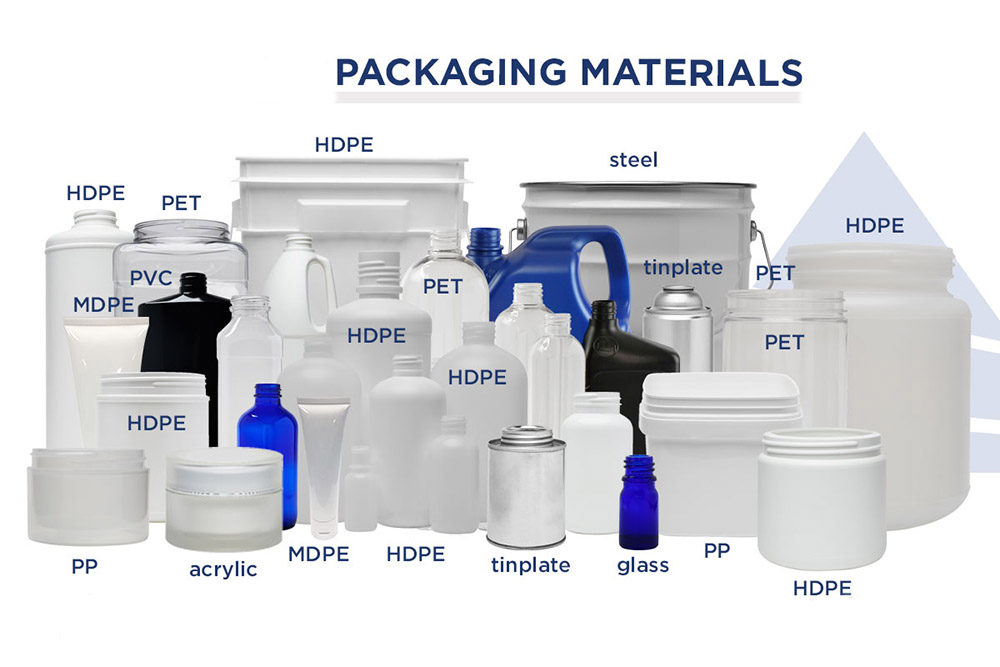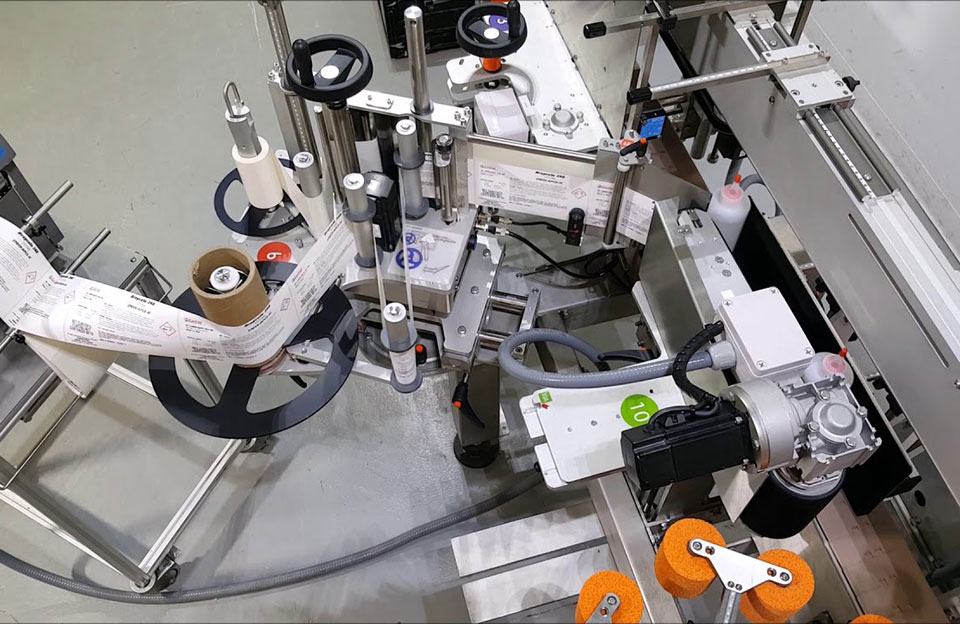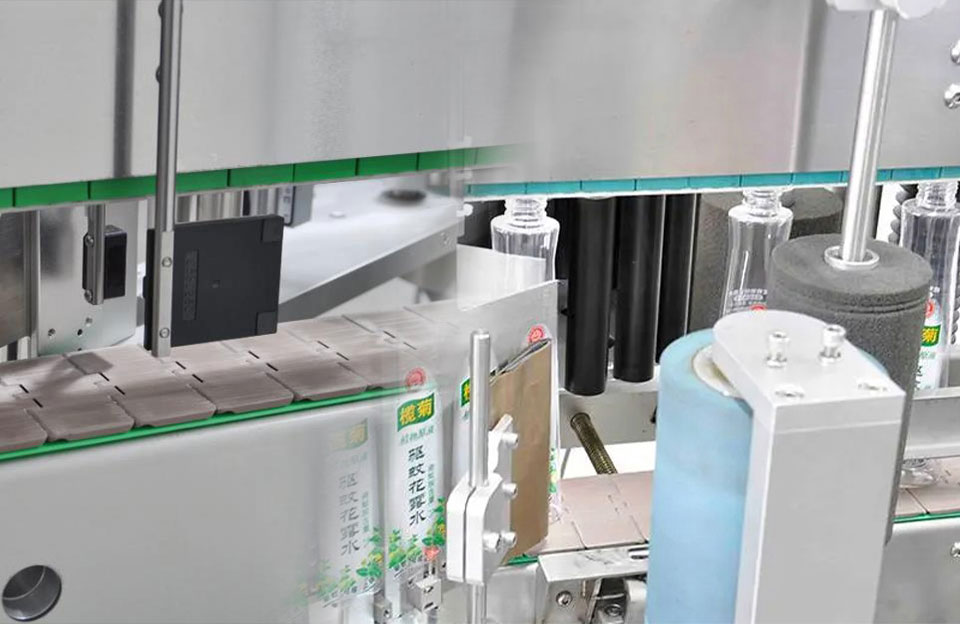Packaging plays a significant role in daily lives and has a far-reaching impact on various aspects of society, the economy, and the environment. One of the primary functions of packaging is to protect products from damage, contamination, and spoilage during transportation, storage, and handling. The packaged product will be labeled, mainly reflecting the relevant product information.
The relationship between packaging material and self-adhesive labeling machine is crucial in product packaging and labeling processes. Packaging materials refer to the materials used to encase, protect, and present products while labeling machines are used to apply labels onto the packaging.
Main Packaging Materials in Daily Life
Packaging materials are diverse and cater to various needs based on the products they protect and the desired properties. Some of the main packaging materials commonly used in our daily lives include:
- Plastic: Plastic is one of the most widely used packaging materials due to its versatility, durability, and cost-effectiveness. Common types of plastic packaging include polyethylene (PE), polypropylene (PP), polyethylene terephthalate (PET), and polystyrene (PS). Plastic is used for bottles, food containers, bags, wraps, and many other applications.
- Paper and Cardboard: Paper and cardboard packaging are renewable and biodegradable materials. They are commonly used for boxes, cartons, bags, and wrapping materials. Cardboard boxes are particularly prevalent in shipping and storage due to their strength and ease of recycling.
- Glass: Glass is a non-reactive and recyclable packaging material commonly used for beverages, such as bottles for water, soft drinks, and alcoholic beverages. It preserves the taste and quality of the contents and is also suitable for various food products like jams, sauces, and pickles.
- Metal: Metal packaging, such as aluminum and steel, offers excellent barrier properties, making it ideal for preserving food and beverages. Common metal packaging includes beverage cans, food cans, and aerosol containers.
- Flexible Packaging: This includes foil, pouches, laminates, and films. Flexible packaging is lightweight, easy to handle, and often used for snacks, coffee, condiments, and other convenience products.
- Biodegradable and Compostable Materials: As sustainability becomes a priority, biodegradable and compostable materials are gaining popularity. These materials, made from renewable resources like cornstarch or sugarcane, break down naturally over time, reducing environmental impact.
- Styrofoam (Expanded Polystyrene): Although widely used, Styrofoam has raised concerns due to its non-biodegradability and environmental impact. Efforts are being made to find alternatives to this material.
- Wood: Wood packaging is common for heavy-duty and industrial applications, like crates and pallets used for transporting goods.
- Textiles: Some products are packaged using textiles or fabric materials, especially in the fashion and luxury industries, providing a more premium and reusable packaging option.
- Composite Materials: These are combinations of different materials that provide specific functionalities. For example, Tetra Pak cartons use a combination of paper, plastic, and aluminum layers to preserve liquids like milk and juice.

Different Packaging Materials
What Packaging Materials Can Use Self-Adhesive Labeling Machine?
Self-adhesive labeling machines can work with a wide range of packaging materials, provided the surface is suitable for label adhesion, and the containers can be transported through the labeling process without any issues. Here are some common packaging materials that can be used with self-adhesive labeling machines:
- Glass: Glass containers, such as bottles and jars, are commonly used in the food and beverage industry. They provide a smooth and stable surface for label application.
- Plastic: Plastic containers like PET, HDPE, and other plastic packaging are widely used with self-adhesive labeling machines. Plastic materials are lightweight, versatile, and suitable for various products.
- Metal: Metal cans, tinplate containers, and aluminum cans are examples of metal packaging that can be labeled using self-adhesive labeling machines. These materials are often used in the food and beverage industry.
- Cardboard: Cardboard cartons and boxes can be labeled with self-adhesive labels for product identification, branding, and handling instructions.
- Flexible Packaging: Flexible packaging materials, such as stand-up pouches and bags, can be labeled using self-adhesive labels. This type of packaging is commonly used for snacks, beverages, and other consumer goods.
- Composite Materials: Packaging made from a combination of different materials, such as Tetra Pak cartons, can also be labeled with self-adhesive labels.
- Wood: Wooden containers, such as wine barrels and crates, can be labeled using self-adhesive labels for branding and product information.
- Ceramic: Some products, like ceramic jars and containers, can be labeled with self-adhesive labels, provided the surface is suitable for label adhesion.
- Cardstock: Cardstock materials used in the cosmetics and personal care industries can be labeled with self-adhesive labels for product packaging.
Conclusion
When using a self-adhesive labeling machine, it’s essential to consider the characteristics of the packaging material, such as surface smoothness, moisture resistance, and the ability to handle label adhesion. Some materials may require specific label adhesives or adjustments to the labeling machine settings to ensure optimal labeling results. It’s always a good practice to conduct tests with the specific packaging material and label type to ensure compatibility and adherence.


